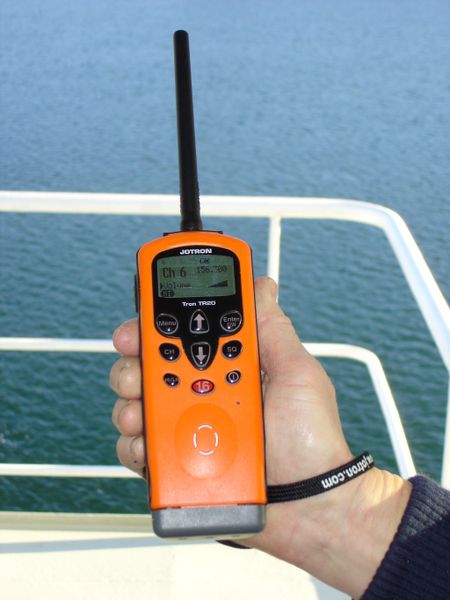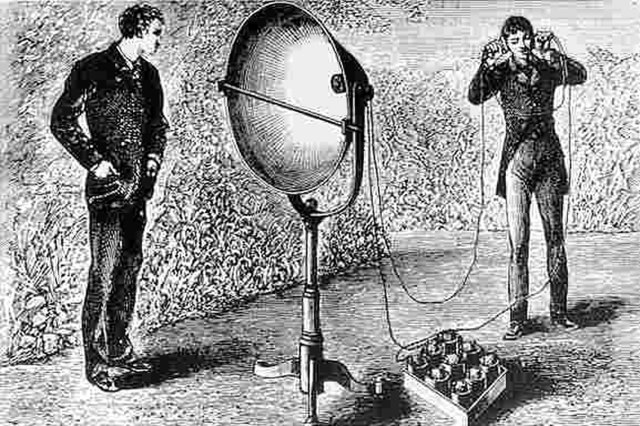A pager, also known as a beeper or bleeper, is a wireless telecommunications device that receives and displays alphanumeric or voice messages. One-way pagers can only receive messages, while response pagers and two-way pagers can also acknowledge, reply to, and originate messages using an internal transmitter. In Japanese, it was commonly called a pocket bell or pokeberu (ポケベル), which is an example of wasei-eigo.
A Motorola LX2 pager
Four historical Japanese pagers
An NEC pager branded by Deutsche Telekom for the Skyper pager service
Original Motorola "Pageboy II" pager, used in New York in the late 1970s.
Wireless communication is the transfer of information (telecommunication) between two or more points without the use of an electrical conductor, optical fiber or other continuous guided medium for the transfer. The most common wireless technologies use radio waves. With radio waves, intended distances can be short, such as a few meters for Bluetooth or as far as millions of kilometers for deep-space radio communications. It encompasses various types of fixed, mobile, and portable applications, including two-way radios, cellular telephones, personal digital assistants (PDAs), and wireless networking. Other examples of applications of radio wireless technology include GPS units, garage door openers, wireless computer mouse, keyboards and headsets, headphones, radio receivers, satellite television, broadcast television and cordless telephones. Somewhat less common methods of achieving wireless communications involve other electromagnetic phenomena, such as light and magnetic or electric fields, or the use of sound.

A handheld on-board communication station of the maritime mobile service
Bell and Tainter's photophone, of 1880.
Marconi transmitting the first radio signal across the Atlantic.
Power MOSFETs, which are used in RF power amplifiers to boost radio frequency (RF) signals in long-distance wireless networks.








